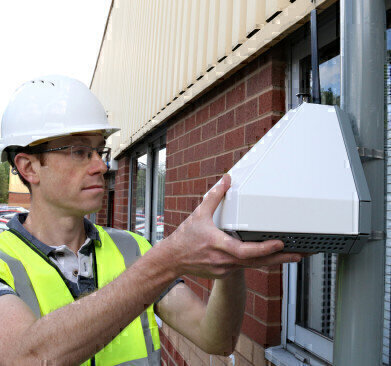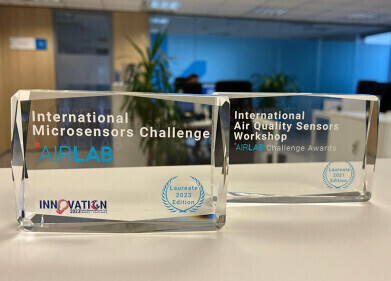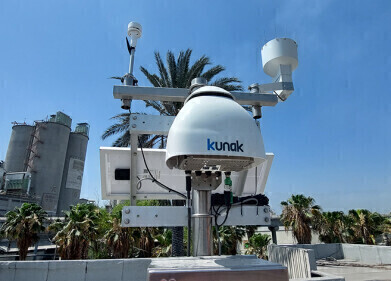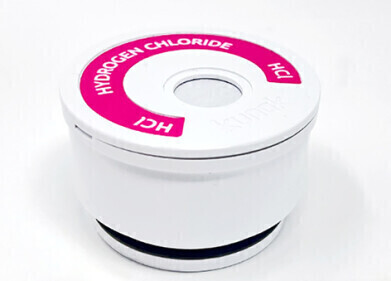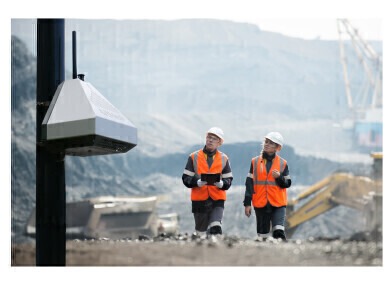Air Sensors
Urban observatory monitors Newcastle with new generation of sensors
Jul 24 2018
Air Monitors is playing a key role in the UK’s first urban observatory which has been designed to provide a digital view of how British cities work. The company has supplied air quality monitoring equipment which has been deployed across Newcastle and Gateshead in conjunction with other instruments for monitoring parameters such as air and water quality, noise, weather, energy use, traffic and even tweets.
Forming part of a network of over 600 sensors, the urbano led by Newcastle University has already collected over half a billion data points and the information is now starting to shed light on the way different systems interact across the city and provide a baseline against which future cities can be developed and managed.
To-date Air Monitors has supplied 55 AQMesh pods and 6 conventional air quality monitoring stations. The conventional stations employ standard reference methods to measure key air quality parameters such as nitrogen dioxide, ozone, carbon monoxide and particulates. The AQMesh pods monitor similar parameters, but are smaller, solar-powered, wireless, web-enabled devices that can be quickly and easily located in almost any location.
Commenting on Air Monitors’ involvement in the Urban Observatory project, Managing Director Jim Mills says: “This is a tremendously exciting project and we are delighted to have been chosen to supply much of the air quality monitoring equipment.
“The conventional stations are delivering precise, accurate data, and the AQMesh pods are providing the portability and flexibility to monitor air quality accurately and reliably in the locations of most interest.
“Perhaps the most interesting aspect of this project is its ability to engage with the community, providing detailed localised air quality information so that both the authorities and citizens can make informed decisions on how to reduce exposure to air pollution. Looking forward, it is clear that work in Newcastle will serve as a model for other cities around the world to follow.”
The National Observatories facility was established in 2017 with the Newcastle Urban Observatory as the founding member, supported by 8.5 million pounds investment from EPSRC (Engineering and Physical Sciences Research Council). The guiding principles are to be technology agnostic and vendor non-exclusive, open by default and transparent by design whilst developing a valued, long-term, sustainable platform. In order for the data to be useful to better understand cities and to facilitate evidence based decision-making across a range of scales and sectors, the data needs to be robust and reliable with known data quality that can be validated.
The AQMesh pods are also being used as part of the ‘Sense My Street’ tool box which enables local people and communities to commission sensors and locate them on their streets, collecting evidence to inform or even change their communities. In addition to AQMesh, the toolbox also includes the Fidas ‘Frog’ from Air Monitors – a portable battery powered, but highly accurate, dust monitor that is able to measure even the finest particulates that travel deepest into the lungs, and therefore represent the greatest threat to health.
As part of the project, schoolchildren carried a Fidas Frog to measure their exposure to (largely traffic-borne) particulate pollution during their journey to school in the Heaton area of Newcastle. The data from Sense My Street is fed into the Urban Observatory to inform evidence-based decisions about the future development and management of the city.
Phil James, who co-leads the urban observatory research, explains: “Cities are complex environments and if we want to develop them sustainably we have to understand how everything interacts.
“By compiling observations and comparing the data, for the first time we are now able to make more informed decisions about designing our infrastructure and cities to work better for people and the environment.
“Through the Sense my Street Project, we are able to give communities the power to gather data relevant to issues that are important to them at a very local scale.
“In Heaton, for example, the drive behind the project is to provide evidence for dedicated cycle lanes. The hope is that this would not only reduce the number of cars on the road but also improve children’s health both in terms of reducing air pollution, but also getting them out of the cars and exercising.”
All of the data is freely available at Newcastle University’s website: www.urbanobservatory.ac.uk, and is being used by researchers, local authorities, regulators, town planners, developers, businesses and members of the public.
Digital Edition
IET 34.2 March 2024
April 2024
Gas Detection - Biogas batch fermentation system for laboratory use with automatic gas analysis in real time Water/Wastewater - Upcycling sensors for sustainable nature management - Prist...
View all digital editions
Events
May 05 2024 Seville, Spain
May 06 2024 Minneapolis, MN, USA
May 13 2024 Munich, Germany
May 15 2024 Lund, Sweden
May 15 2024 Frankurt-am-Main, Germany
